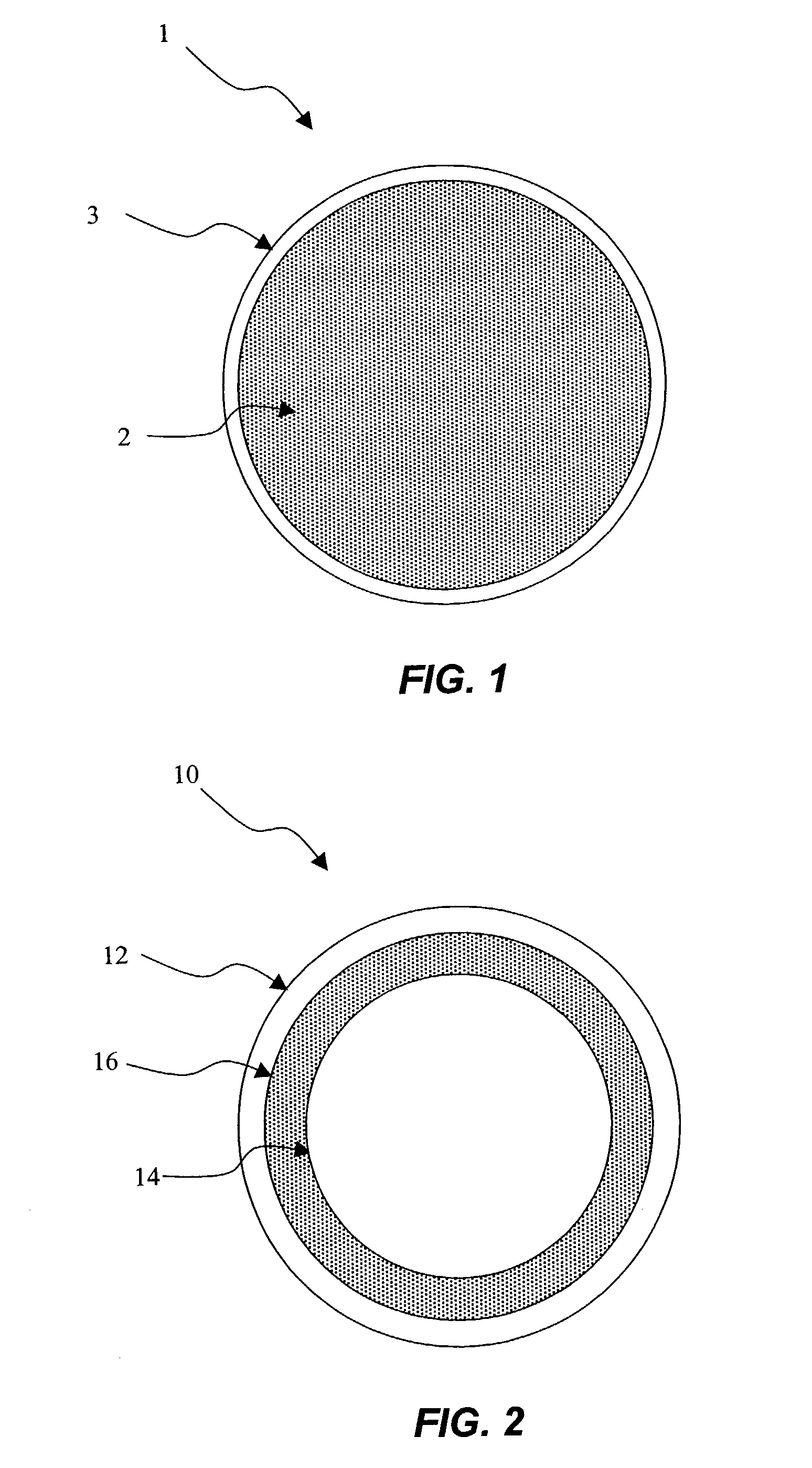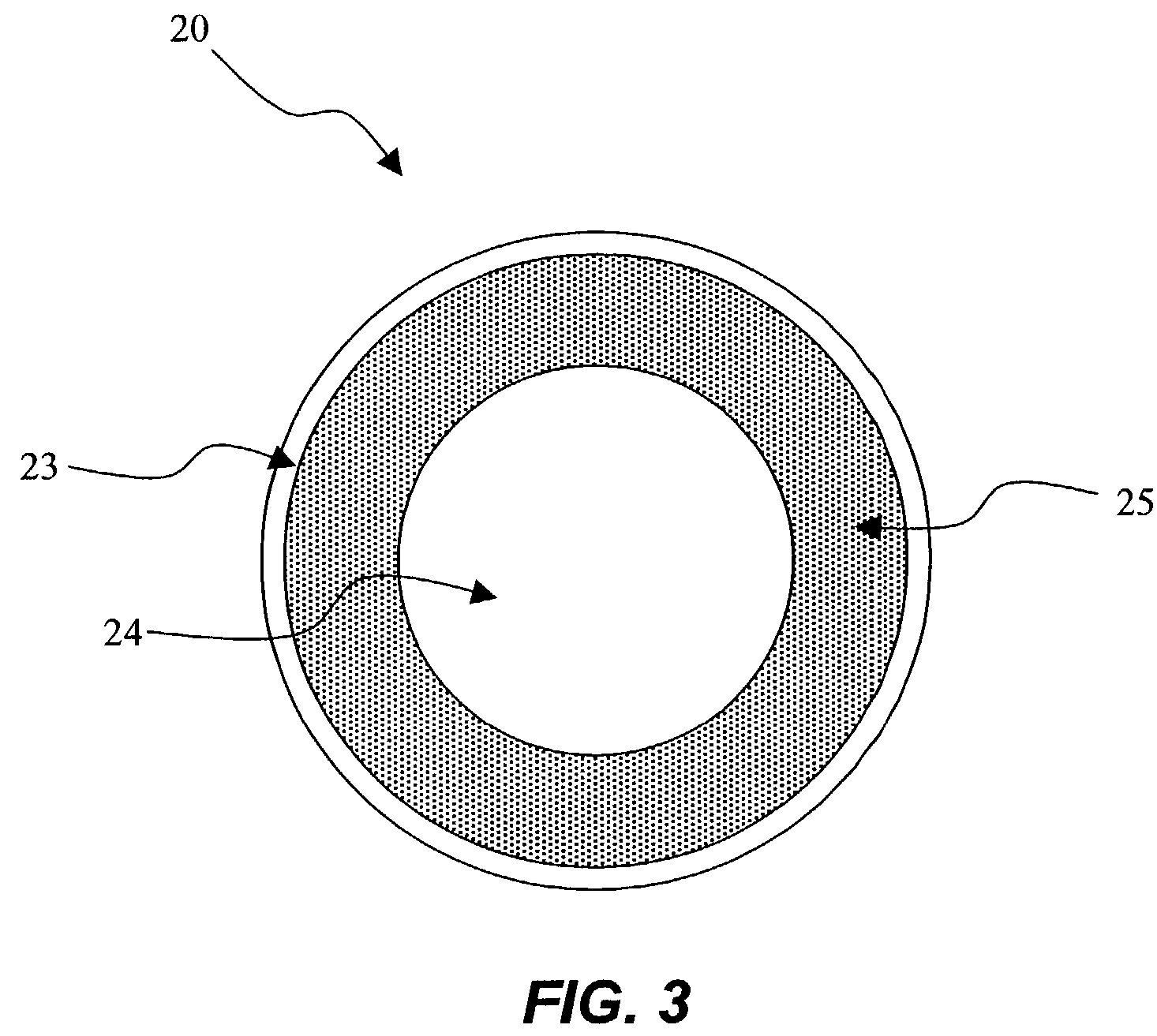Highly neutralized polymer golf ball compositions including oxa acids and methods of making same
a polymer and composition technology, applied in the field of high-neutralized compositions, can solve the problems of lack of durability required by the average golfer, easy damage to the balance of the ball in normal play, and inability to cut ionomer-covered balls, etc., and achieve the effect of losing tangent (tan )
- Summary
- Abstract
- Description
- Claims
- Application Information
AI Technical Summary
Benefits of technology
Problems solved by technology
Method used
Image
Examples
Embodiment Construction
[0062]The present invention is directed to compositions including oxa acids and / or oxa acids salts combined with an non-neutralized or partially neutralized polymers to produce highly neutralized polymers for use in golf ball components. The present invention also relates to golf balls including at least one foamed or unfoamed layer that includes at least one oxa ester, at least one saponified polymer, saponified polymer / oxa ester blends, oxa acids, oxa acid / oxa ester blends, all of which may be blended with conventional ionomers and thermoplastic ionomers, grafted metallocene catalyzed polymers or polymer blends, non-grafted metallocene catalyzed polymers or polymer blends, as well as additives well known in the golf ball art. The compositions of the invention are contemplated for use in golf balls of any construction, e.g., one-piece, two-piece, and three-piece balls.
[0063]As used herein, the terms “conventional ionomers” and “conventional thermoplastic ionomers”, refer to copolym...
PUM
| Property | Measurement | Unit |
|---|---|---|
| Temperature | aaaaa | aaaaa |
| Temperature | aaaaa | aaaaa |
| Fraction | aaaaa | aaaaa |
Abstract
Description
Claims
Application Information
 Login to View More
Login to View More - R&D
- Intellectual Property
- Life Sciences
- Materials
- Tech Scout
- Unparalleled Data Quality
- Higher Quality Content
- 60% Fewer Hallucinations
Browse by: Latest US Patents, China's latest patents, Technical Efficacy Thesaurus, Application Domain, Technology Topic, Popular Technical Reports.
© 2025 PatSnap. All rights reserved.Legal|Privacy policy|Modern Slavery Act Transparency Statement|Sitemap|About US| Contact US: help@patsnap.com



